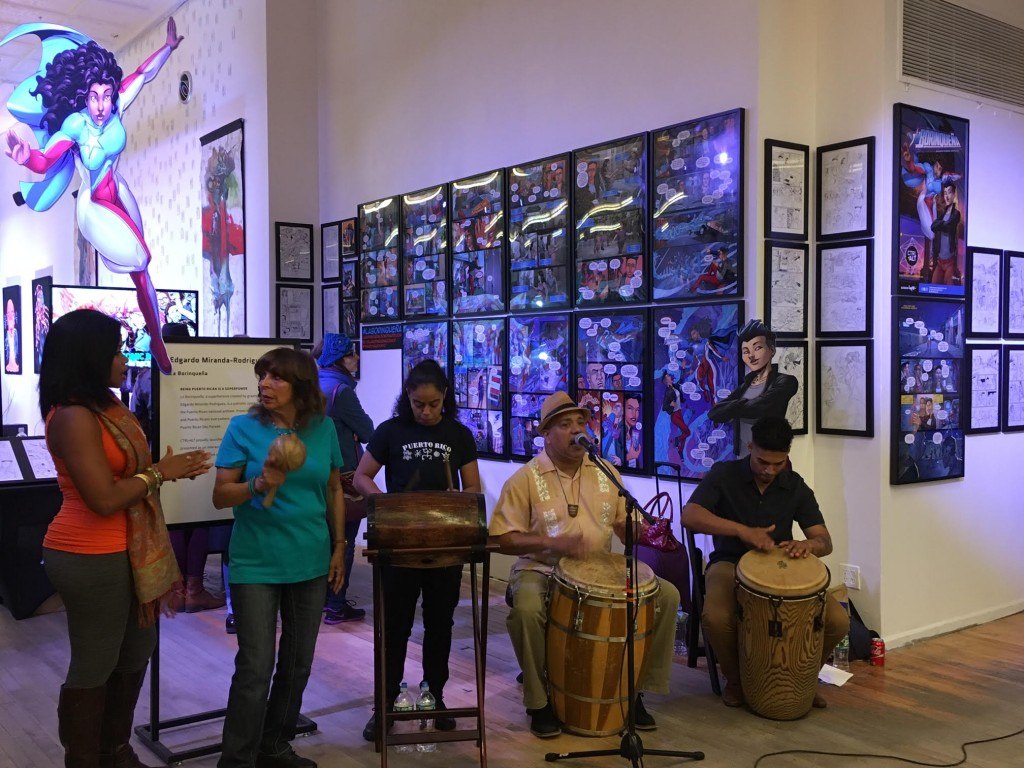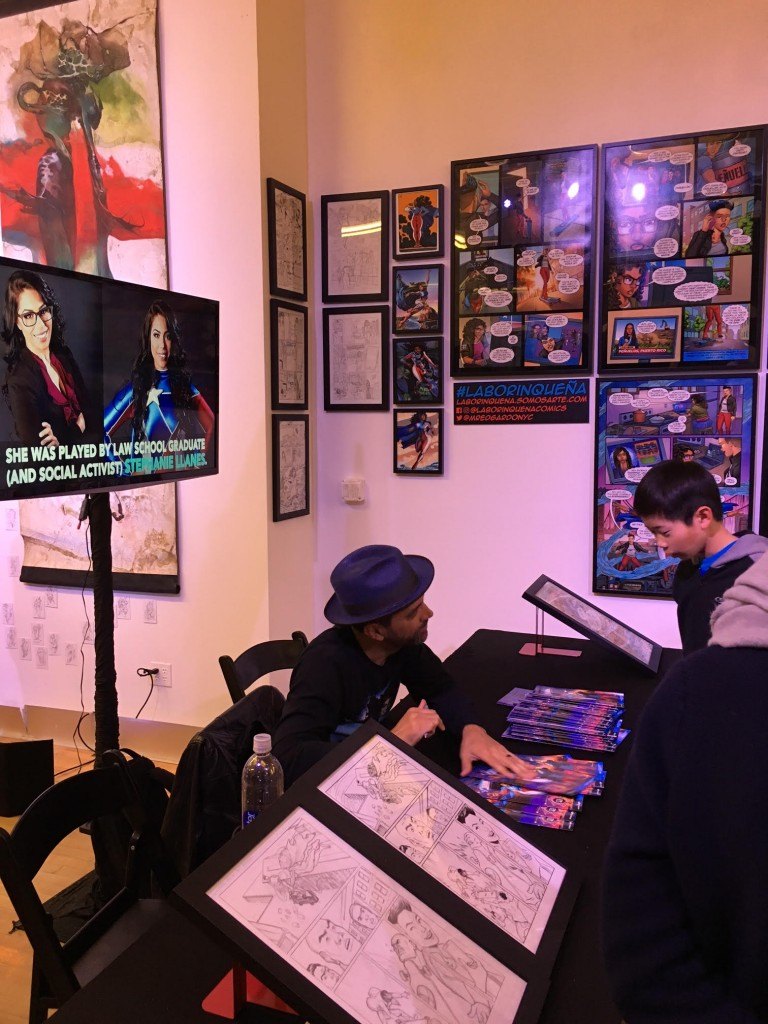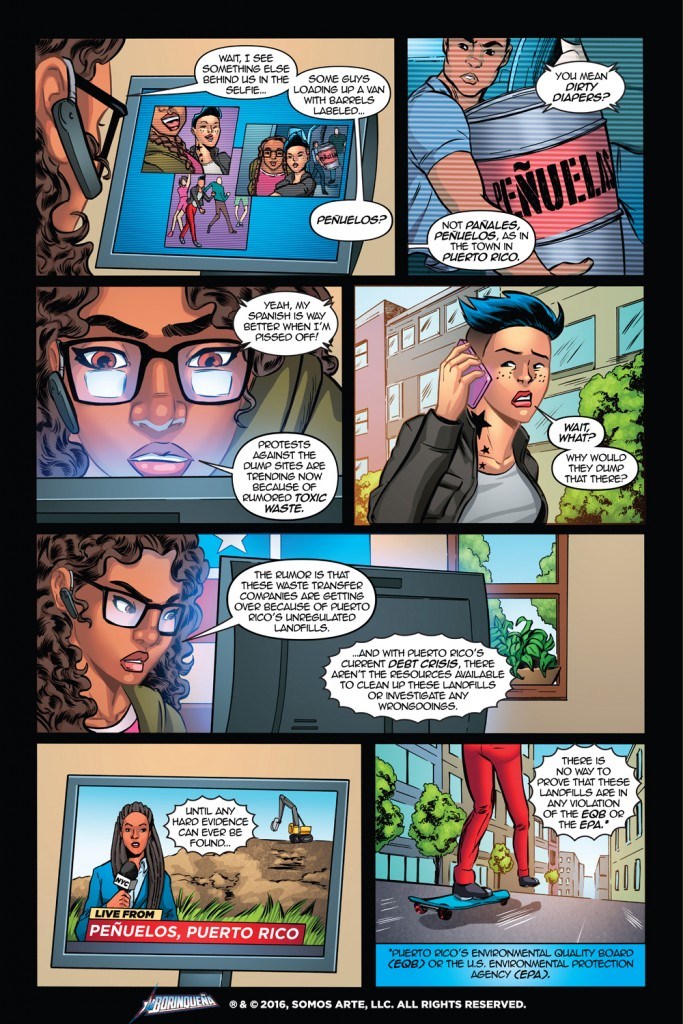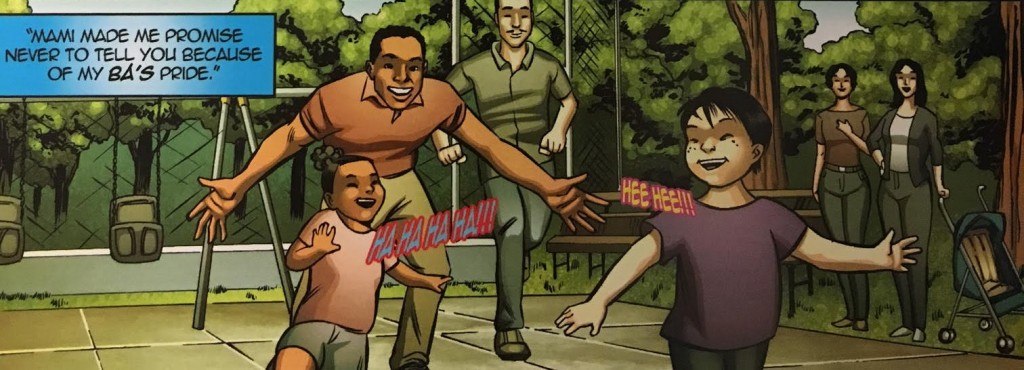“Is the future something that happens to you, or something you actively create?”
These were the words displayed as open arms at the doors of the Ctrl+Alt: A Culture Lab on Imagined Futures Exhibit in Chinatown, New York City. The exhibit, presented by the Smithsonian Asian Pacific American Center, showcased the work of more than 40 artists across a diverse set of artistic disciplines. Ranging from visual to digital art, interactive gaming to academic lecture, and meditative to exercise inducing, each artist pushed us to imagine a future where people of color were both at the forefront and at the center.
Amidst this throng of powerful work, the sounds of Puerto Rico could be heard. At the center of the two-floor space was Bomba Yo playing the African born, Puerto Rican cultivated rhythms of Bomba. Around them hung images of brightly painted character cutouts and framed storyboards from the comic book, La Borinqueña. Nestled behind a table at the center of it all was Edgardo Miranda-Rodriguez: steel glasses, black fedora, and a smile as inviting as the characters who surrounded him.
For this exhibit, Miranda-Rodriguez had been asked to write a 12-page story about La Borinqueña’s best friend, Lauren “La-La” Liu, a Chinese-Dominican college student living in the Washington Heights neighborhood of New York City. While this short suffers from a fast paced and strung together overtly political plot, Miranda-Rodriguez does his best beneath the surface: strong character backstory filled to the brim with cultura, cultura, cultura!
The relationship between Marisol “Mari” Rios De La Luz, La Borinqueña’s real name, and La-La is what holds this short together. As the two young women walk home from a party in the Williamsburg neighborhood of Brooklyn, what is said is as important as what is unsaid. Juan Fernandez, the colorist for the story, provides testament to the range of Latinx skin tones, even in a nightscape. To have Mari and La-La simply existing together as a darker-skinned Puerto Rican and a biracial Latina is representative of the true range of the Latinx diaspora. Not only that but their dialogue reverberates with authenticity to the millennial ear through the use of both English slang and Spanglish. In juxtaposition to the common tight-rope walking of tongues amongst people of color in America, Mari and La-La embrace their two worlds freely and make them one.
Miranda-Rodriguez excels in the subtleties, sprinkling Puerto Rican history throughout his work. From the first panel, Mari is wearing a jacket with the flag of Lares on it. El Grito de Lares was the first organized rebellion on the island against Spanish colonial rule in 1868. To this day, El Grito de Lares was the longest rebellion on the island. While the rebellion was unsuccessful it is still etched in the memory of Puerto Rico, a moment which proved the island could stand up and fight for itself. For this reason the flag has been used throughout history, most recently being waved during protests against the forced debt and colonial crisis. It is in this way that Miranda-Rodriguez weaves the past and present.
With the Lares flag hanging in her bedroom behind her, Mari discovers something strange about the selfies she took the night before. In the background two men are loading barrels labeled Peñuelos, a town in Puerto Rico where toxic waste had been dumped for the past few months. Mari is referencing the very real situation in Peñuelos in March, 2016 when it was discovered that 7,000 tons of toxic waste had been illegally dumped there.
When Mari makes this connection, her television immediately responds as a news reporter states: “…And with Puerto Rico’s current debt crisis, there aren’t the resources available to clean up these landfills or investigate any wrongdoings.” In this way the plot falters, with many moments happening “coincidentally” and arguably unnaturally. While the Peñuelos plot leads Mari to reveal herself to La-La as La Borinqueña, what proves to be much more powerful is when La-La reveals herself to Mari.
What begins as a simple disagreement over the importance of a cell phone quickly becomes an honest and timely look at intersectionality and immigration. La-La reveals the history of her parents to Mari, something she had never told her because of the shame of being lower class. La-La describes Barrio Chino, a working class neighborhood in the Santo Domingo neighborhood of the Dominican Republic, where her parents worked as dry cleaners. Her mother worked into her third trimester because she and her husband were struggling to make ends meet. La-La’s grandmother, affectionately called Ama, saved up enough money to send La-La’s parents to New York City. It was here that Mari’s mother, a doctor, delivered La-La. As La-La states: “That act of kindness bonded our families.”
The most poignant image of La-La’s story is the panel where a young La-La and Mari are being chased in the park by their fathers as their mothers stand on the side smiling. So rarely are people of color shown with two parents, and even rarer are we seen interacting with other families of color in a positive way. While Miranda-Rodriguez set out to speak on many topics in this short, what spoke volumes in this issue did not need words.
Miranda-Rodriguez flourishes between the lines, sweeping his pen across the spaces where cultures come together and vibrate at the same frequency. Whether it be the Dominican Republic and China, Puerto Rico and New York, or even Williamsburg and Washington Heights, we now, more than ever, must see the similarities between our backgrounds and actively create a future where we all belong and prosper. Where its political plot faltered, Mari and La-La’s relationship offered a necessary and timely response to the current American political climate.
This one is a 7 out of 10 WEPAS, serving as a strong introduction to the characters we will see in the full-length graphic novel of La Borinqueña, debuting December 22, 2016 and available now for pre-order on the official La Borinqueña website. Pa’lante mi gente.









Show Comments